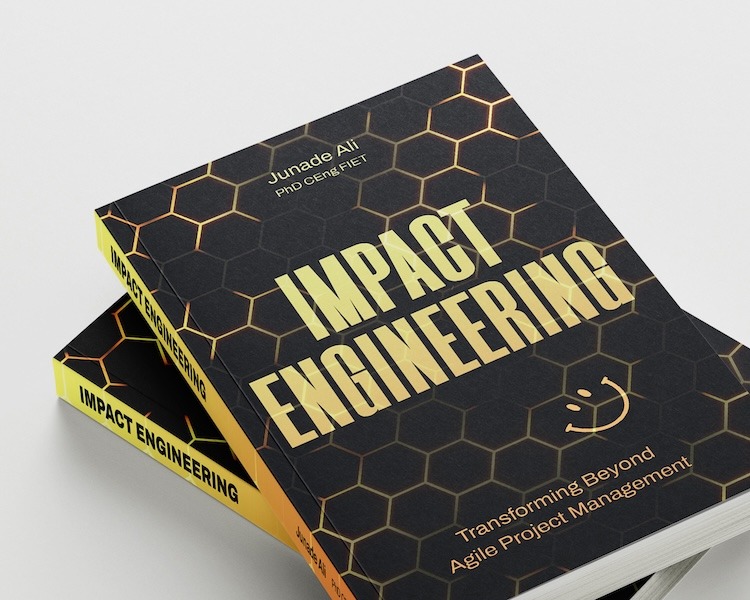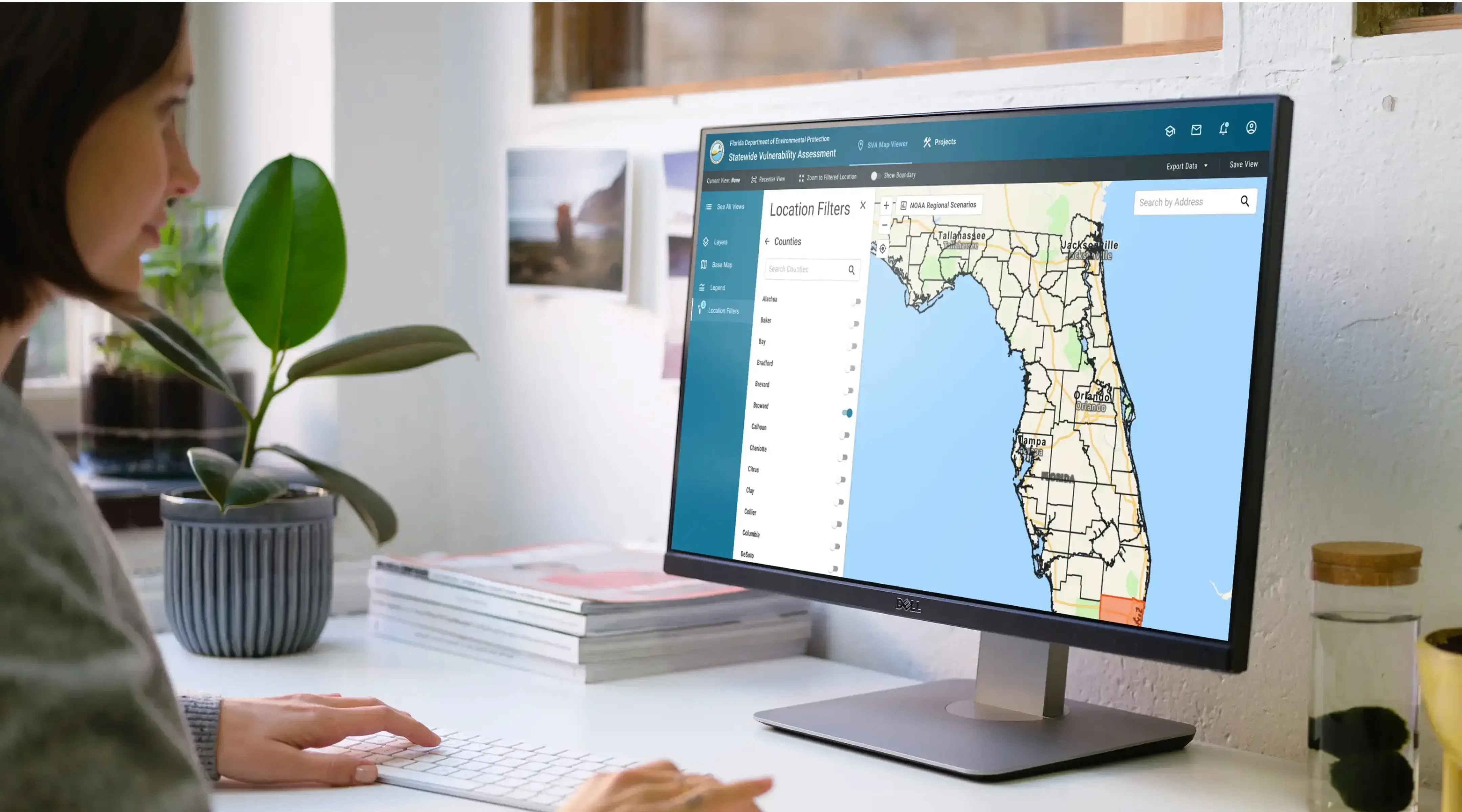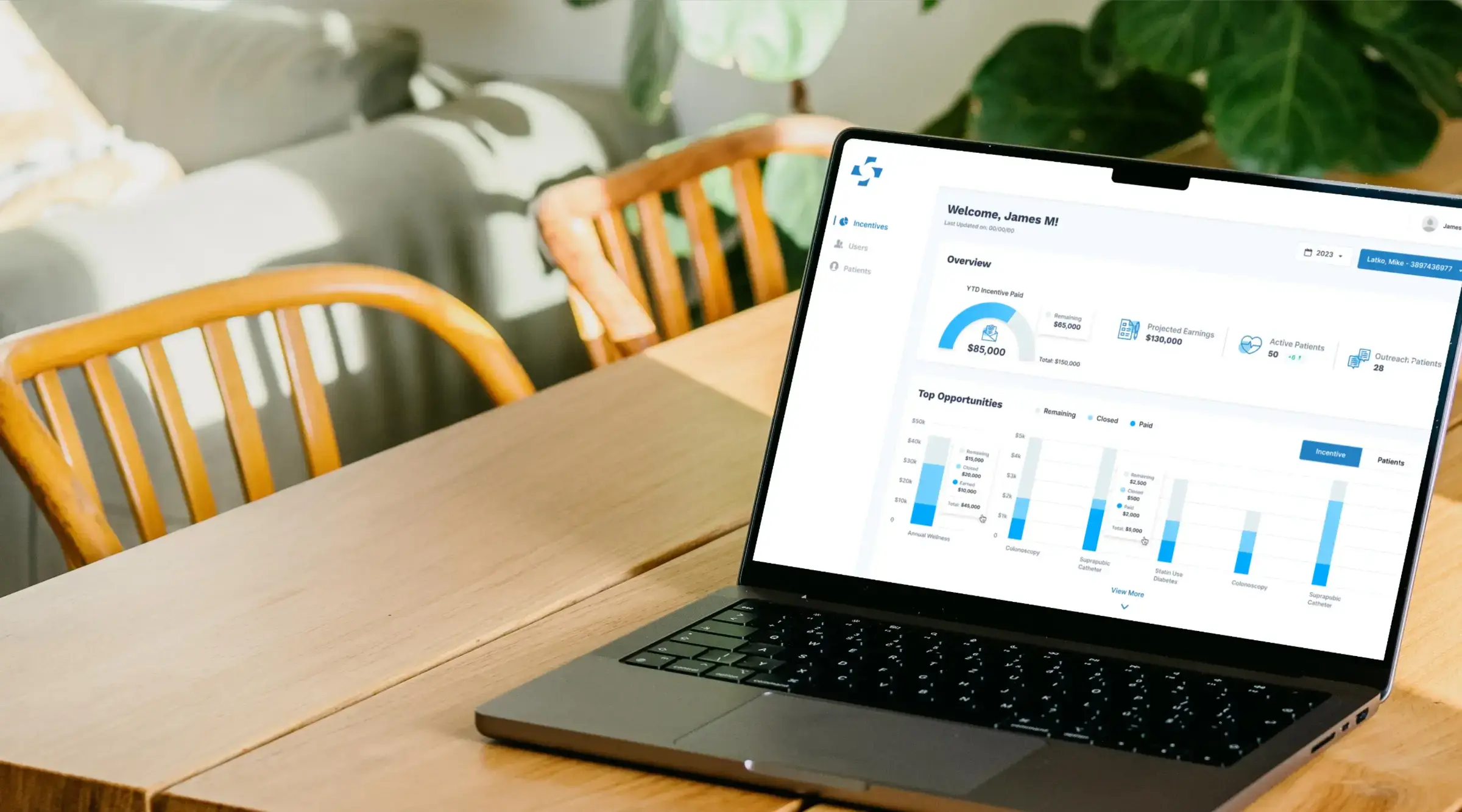A Hybrid model, also known as the Agile Waterfall hybrid model, combines principles from Agile and Waterfall development methodologies, creating a flexible project management approach that caters to diverse project needs. This integration allows the project managers and the project team to leverage the strengths of both methods for better outcomes.

October 2, 2024
Seamgen's Hybrid Agile Development: Success for Every Project
Written by Katie Bielawiec
Overview
-
Hybrid Methodology: Seamgen combines Agile's flexibility and Waterfall's structured planning to create a tailored hybrid approach for successful software development projects.
-
Agile-Waterfall for a Better Blend: This hybrid approach enables ongoing planning and frequent client feedback, while maintaining clear project phases and thorough documentation.
-
Phased Approach with Agile Development: Key project phases include Discovery & Strategy, Design & Architecture, Agile Development, Final UAT & Deployment, and continuous improvement through a feedback loop.
-
Proven Success: Seamgen's hybrid method has been effectively applied in real-world projects like Florida DEP’s sea level rise app and Healthcare Partners' digital transformation.
Time to read: 18 min
Table of Contents +
- Agile Waterfall Hybrid Method
- Agile Project Management
- Waterfall Project Management
- Recent Data on Agile Shortcomings
- Agile Waterfall Hybrid: Taking the Best of Agile & Waterfall
- Seamgen’s Unique Hybrid Agile Processes
- Discovery and Strategy Phase
- Design & Architecture Phase
- Agile Development Phase
- Final UAT & Deployment Phase
- Rinse and Repeat Feedback Loop
- Real-World Examples of Seamgen’s Hybrid Agile Success
- Case Study 1: Powering the Florida DEP's Sea Level Rise App
- Case Study 2: A Tailored Solution for ActiveHealth/CVS
- Case Study 3: Healthcare Partners Digital Transformation
- Why Seamgen’s Hybrid Agile Approach Stands Out
- Frequently Asked Questions (FAQ's)
Agile Waterfall Hybrid Method
At Seamgen, we have perfected blending Agile and Waterfall development practices into a cohesive Hybrid methodology that maximizes the success of our software development projects. Let's start by reviewing Agile Project Management and Waterfall Project Management.
What is Agile Project Management?
Agile Project Management is a flexible and iterative approach to managing software development, particularly in software development. Agile methodology focuses on delivering small, workable segments of a project incrementally, allowing for frequent reassessment and adaptation throughout the process. Agile principles emphasize collaboration, customer feedback, and continuous improvement, enabling teams to respond swiftly to changes and deliver high-quality results that align closely with client needs and market demands.
What is Waterfall Project Management?
Waterfall Project Management is a linear and sequential approach to managing projects, where each phase must be completed before the next one begins. This method follows a clear, structured path from project initiation to completion, with distinct stages such as requirements gathering, design, development, testing, and deployment. Waterfall methodologies emphasize thorough planning and documentation upfront, making it well-suited for projects with well-defined goals and requirements that are unlikely to change. However, it can be less flexible in accommodating changes once the project is underway.
WHO ARE WE? HYBRID AGILE Experts
-
At Seamgen, we merge the flexibility of Agile with the structured planning of Waterfall, creating a Hybrid development process that ensures consistent, high-quality software deliveries.
-
With over a decade of experience in crafting solutions for complex, long-term projects, we offer unparalleled expertise in Agile and Waterfall methodologies, emphasizing continuous feedback and user-centric design.
-
USA design led San Diego custom software development company based in Southern California.
-
We invite you to call us for a free project consultation.
Recent Data on Agile Shortcomings
A study for the book Impact Engineering, has discovered that software projects "software projects adopting Agile practices are 268 percent more likely to fail compared to those that do not". This statistic does not bode well for projects running with Agile. However, there are other statistics, included in the study, that were quite revealing.
"One remarkable finding was that projects with well-documented requirements before development began were 97 percent more likely to succeed."
"Having a specification in place before development starts can lead to a 50 percent increase in success, and ensuring the requirements accurately reflect the real-world problem can result in a 57 percent increase."
"Projects where engineers felt free to discuss and address issues were 87 percent more likely to succeed, it was reported."

Explore how Dr. Junade Ali's Impact Engineering: Transforming Beyond Agile Project Management challenges traditional Agile methods, offering a structured approach to drive project success. Buy it now on Amazon.
Agile Waterfall Hybrid: Taking the Best of Agile & Waterfall
Our Agile Waterfall Hybrid methodologies allow us to deliver exceptional results for our clients by combining the flexibility of Agile with the structured planning of Waterfall model in our software development projects.

Traditional waterfall methodology provides a solid foundation of planning and discussion to ensure our project achieves client success. By incorporating Agile methodology into our processes, we emphasize ongoing planning, frequent communication during sprint cycles, and constant user feedback. Gathering user feedback regularly ensures that our development aligns with client needs and enhances the overall quality of the product.
Seamgen’s Hybrid Agile methodology is ideal for long-lasting, complex projects that involve multiple teams and evolving personnel, thanks to our strong emphasis on thorough planning and meticulous documentation.
Next we will go over here’s how we implement our Hybrid methodology and why it stands out in the industry.
Seamgen’s Unique Hybrid Agile Processes
Seamgen’s Hybrid approach is designed to offer a balanced approach to project management, ensuring both flexibility and structure along with agile project management during the development phase. Our project management methodology includes key phases such as Discovery and Strategy, Design & Architecture, Agile Development, Final UAT & Deployment, and a Rinse and Repeat feedback loop for long-term projects. Through Agile Project Management practices, we maintain adaptability while ensuring clear communication and progress throughout each phase. Each phase is overseen by dedicated project managers, who ensure meticulous project planning to align with the specific needs of our clients, providing early visibility, reduced risk, and continuous quality enhancement.
Discovery and Strategy Phase
In the initial phase, we work closely with stakeholders to understand their vision and objectives, utilizing various project management methodologies like Agile and Waterfall to create effective hybrid solutions. This involves substantial user research, strategy sessions, and data analysis to create a detailed project blueprint that aligns business strategies with user demands. This foundational stage ensures strong agreement on expectations, setting the stage for successful project execution. This phase often involves Digital Strategy Consulting to align business objectives with technological solutions, ensuring that the project’s goals and user needs are clearly defined.
Milestones
-
Stakeholder Alignment: Our project managers conduct meetings with key stakeholders to gather insights and align on project goals.
-
User Research Completion: Perform user research, including interviews, surveys, and analytics review.
-
Strategy Sessions: Facilitate workshops to define business goals, user needs, and project scope.
-
Project Plan Approval: Develop and secure approval for a comprehensive plan.
Activities
-
Stakeholder interviews and workshops: Engage key stakeholders through interviews and workshops to gather insights, align on project goals, and ensure everyone is on the same page.
-
Competitive analysis and market research: Conduct thorough research to understand the competitive landscape and identify market opportunities, helping to inform strategic decisions.
-
User persona development: Create detailed user personas to represent the target audience, guiding design and development efforts to meet their needs and preferences.
-
Defining key performance indicators (KPIs): Establish measurable KPIs to track project progress and success, ensuring alignment with business objectives.
-
Risk assessment and mitigation planning: Identify potential risks early on and develop strategies to mitigate them, minimizing their impact on the project.
Deliverables
-
Detailed project plan: A comprehensive blueprint outlining the project's scope, timeline, resources, and milestones, ensuring all stakeholders are aligned and informed.
-
User personas: In-depth profiles representing the target audience, guiding design and development to meet user needs.
-
User journey maps: Visual representations of the target audience's interactions with the product, providing insights into user experiences and identifying opportunities for improvement.
-
Market analysis report: A thorough examination of the competitive landscape and market opportunities, providing insights for strategic decision-making.
-
Initial risk assessment: An evaluation of potential project risks and their impact, along with strategies to mitigate them, ensuring proactive risk management.
-
Strategic roadmap and timeline: A high-level plan that outlines the project's long-term goals, key milestones, and deadlines, facilitating effective project tracking and management.
Design & Architecture Phase
During this phase, we focus on crafting detailed wireframes, establishing a design system, and compiling technical documentation. Agile techniques allow for iterative development in areas of uncertainty, enabling us to adapt and evolve parts of the project while maintaining a structured approach for more predictable elements. User personas and journey maps guide our design efforts, ensuring that both business ambitions and user preferences are seamlessly incorporated. Our UX Design Process focuses on crafting intuitive and user-centric interfaces, which play a crucial role in achieving business success. This meticulous preparation sets a solid foundation for the development phase.
Milestones
-
Wireframe Approval: Create and iterate on wireframes based on user personas and journey maps.
-
Design System Establishment: Develop a design system, including typography, color schemes, and UI components.
-
Technical Architecture Finalization: Outline and finalize the technical architecture, including system design and data flow diagrams.
Activities
-
Wireframing and prototyping: Develop initial sketches and interactive models to visualize the user interface and functionality.
-
Establishing a design language system: Create a cohesive set of design standards, including typography, color schemes, and UI components, to ensure consistency across the project.
-
Defining technical architecture and data models: Outline the system's structure and how data will be stored, accessed, and managed.
-
Conducting design reviews and feedback sessions: Regularly evaluate design progress and gather input from stakeholders to refine and improve the design.
Deliverables
-
High-fidelity wireframes: Detailed and interactive wireframes that accurately represent the final product's user interface and functionality.
-
Comprehensive design system documentation: A complete set of guidelines and standards for typography, color schemes, and UI components to ensure consistency across the project.
-
Technical architecture diagrams: Visual representations of the system's structure, including data flow and interactions between components.
-
Design review feedback and iteration logs: Records of feedback received during design reviews and the subsequent iterations made to improve the design.
-
Finalized technical documentation: Thorough and detailed documentation of the technical aspects of the project, serving as a reference for development and future maintenance.
Agile Development Phase
Our development team works in two-week sprints, utilizing an Agile approach that prioritizes flexibility, collaboration, and iterative progress. These activities include sprint planning, daily stand-up meetings, code reviews, and quality assurance checks. This iterative development process allows for early detection and correction of issues, fostering constant improvement and ensuring that functionalities meet specified requirements.
Milestones
-
Sprint Planning: Define sprint goals, backlog items, and assign tasks.
-
Sprint Completion: The development team concludes each sprint with a review and retrospective to assess progress and areas for improvement.
-
Functional Testing: Execute functional testing at the end of each sprint to ensure alignment with requirements.
Activities
-
Sprint planning and daily stand-up meetings: These sessions set the agenda for the sprint and provide daily updates on progress and obstacles.
-
Development and coding based on sprint backlog: The development team works on completing tasks from the sprint backlog, focusing on delivering functional code.
-
Continuous integration and deployment (CI/CD): Automated processes are used to integrate code changes and deploy them frequently, ensuring quick delivery and feedback.
-
Code reviews and pair programming: Developers review each other's code and often work in pairs to improve code quality and share knowledge.
-
Automated and manual testing: Both automated tests and manual testing are conducted to ensure the software meets quality standards and functions as expected.
Deliverables
-
Working software increments at the end of each sprint: Deliver functional parts of the software that can be reviewed and tested.
-
Updated product backlog: Maintain a prioritized list of features and tasks that need to be completed.
-
Sprint review and retrospective reports: Document insights and feedback from each sprint to improve future iterations.
-
Test cases and results: Develop and record test scenarios and their outcomes to ensure quality and functionality.
-
Source code repository with version control: Store and manage code with a system that tracks changes and maintains version history.
Final UAT & Deployment Phase
The final phase integrates iterative feedback cycles with structured planning, characteristic of Waterfall project management, to guarantee a robust and thoroughly vetted deployment. Extensive user acceptance testing confirms that the application meets all defined requirements, ensuring a smooth and uninterrupted roll-out.
Milestones
-
User Acceptance Testing (UAT) Completion: Conduct comprehensive UAT to validate that the application meets all defined requirements.
-
Final Sign-Off: Obtain final approval from stakeholders and users before deployment.
-
Deployment: Execute the deployment plan, ensuring a smooth transition to production.
Activities
-
Planning and conducting UAT with end users: Organize and execute user acceptance testing to validate the application's functionality and usability.
-
Iterative bug fixing and performance optimization: Continuously identify and resolve bugs while enhancing the application's performance.
-
Preparing and executing the deployment plan: Develop and implement a comprehensive plan to ensure a smooth transition from development to production.
-
Monitoring post-deployment performance: Track the application's performance after deployment to identify and address any issues promptly.
Deliverables
-
UAT test cases and results: Detailed scenarios and outcomes from user acceptance testing to ensure the application meets user requirements.
-
Deployment checklist and plan: A comprehensive list and strategy for deploying the application smoothly and efficiently.
-
Final application release: The completed version of the application ready for production use.
-
User manuals and training materials: Guides and resources to help users understand and operate the application effectively.
-
Post-deployment support plan: A strategy for providing ongoing support and addressing any issues after deployment.
Rinse and Repeat Feedback Loop
For long-term projects that involve multiple phases of development, Seamgen implements a Rinse and Repeat feedback loop, embracing agile principles to emphasize the flexibility and adaptability they bring to product development. This step allows us to revisit earlier phases, incorporating new insights and feedback into the next cycle of development. By continuously refining and improving the product, we ensure that it evolves to meet the changing needs of the project and stakeholders, ultimately delivering business value through a more polished and effective solution.
Milestones
-
Phase Review: At the end of each development phase, review the project’s progress and gather feedback from stakeholders.
-
Iteration Planning: Plan the next phase based on lessons learned and new requirements.
-
Continued Improvement: Integrate feedback and refinements into the subsequent development cycle.
Activities
-
Regular stakeholder feedback sessions: Frequent meetings with stakeholders to collect feedback, gain insights, and ensure alignment on project goals.
-
Reassessing project goals and objectives: Periodic evaluation of project aims to ensure they remain relevant and achievable.
-
Incorporating new features and enhancements: Adding new functionalities and improvements based on feedback and evolving needs.
-
Updating documentation and plans for the next phase: Revising project documents and plans to reflect changes and prepare for upcoming phases.
Deliverables
-
Phase review reports: Detailed analyses of each phase to evaluate progress and gather feedback.
-
Updated plan and timeline: Revisions to the project planning and timeline to reflect new insights and changes.
-
Refined product backlog: A prioritized list of features and tasks, updated based on feedback and evolving requirements.
-
Documentation: Records of improvements made throughout the project to ensure ongoing enhancement.
-
Iteration-ready wireframes and architecture: Updated wireframes and technical architecture prepared for the next development cycle.
Real-World Examples of Seamgen’s Hybrid Agile Success
Case Study #1
Powering the Florida DEP's Sea Level Rise App

Our hybrid Agile-Waterfall process played a critical role in the successful development of the Florida Department of Environmental Protection’s (FDEP) sea level rise data access and interpretation app. This collaborative approach ensured alignment from the very beginning, offering significant advantages such as early visibility and reduced risk.
During the development phase, the FDEP team was kept informed with frequent and regular communication, allowing for timely course corrections. Continuous testing throughout the sprints enhanced the overall quality of the app. This project is a testament to the effectiveness of our Hybrid approach in delivering a tool that meets the FDEP’s needs for a GSI map-based app to provide effective data access and interpretation.
Click here for more about our Florida Case Study
Case Study #2
A Tailored Solution for ActiveHealth/CVS

A recent collaboration with ActiveHealth/CVS Health exemplifies the effectiveness of our methodology in creating a more user-centric platform. By leveraging agile methods during development and use of collaborative project management software tools, we broke the project into smaller, manageable sprints, delivering incremental business value while remaining agile in response to evolving requirements. Strong collaboration and open communication between our team and ActiveHealth/CVS representatives were emphasized throughout the engagement. Our approach helped ActiveHealth/CVS achieve enhanced user experience, increased efficiency, and boosted customer satisfaction.
Click here for more about our ActiveHealth/CVS Case Study
Case Study #3
Healthcare Partners Digital Transformation

Seamgen partnered with Healthcare Partners (HCP) to transform their patient care management system using our Hybrid approach. By combining iterative development with structured planning within the software development life cycle, we integrated HCP’s on-premise infrastructure with a new cloud-based system on Microsoft Azure. This transition marked HCP’s first step into the cloud, providing them with a modernized, scalable platform that supports secure identity management and single sign-on for users. Our expertise in Custom Healthcare Software Development allowed us to create a solution tailored to HCP’s unique needs, improving patient care management and operational efficiency. The project improved the flow of information and data accuracy, laying the foundation for future enhancements.
Click here for more about our HCP Case Study
Seamgen Standing Out with a Hybrid Agile Approach
Seamgen’s Hybrid Project Management approach is not just about blending methodologies; it’s about embracing hybrid project management, which combines Agile with Waterfall methodologies to enhance flexibility and efficiency. Our commitment to innovation, strong collaboration, and continuous delivery and improvement ensures that we deliver high-quality outcomes that align with business objectives and user demands. By leveraging our unique processes, tools, and real-world expertise, Seamgen transforms project management into a strategic advantage for our clients and maximizes our project success for our clients.
KATIE BIELAWIEC
Senior Project Manager, Seamgen
Katie, our Senior Project Manager at Seamgen, is a dedicated professional with a robust foundation from the University of California, San Diego (UCSD). With experience spanning diverse roles and industries, from Achieve Internet to leading digital initiatives at Seamgen, she has a proven track record of steering successful projects and showcasing unparalleled expertise in the realm of project management.
Contact Us to Talk About Your Agile Project
Frequently Asked Questions
2
Why is Seamgen's Hybrid Approach beneficial?
+
Seamgen’s Hybrid Approach is advantageous because it combines structured planning with Agile flexibility. The project manager will establish clear timelines, scopes, and budgets, effectively managing risks and enhancing customer satisfaction. This dual approach adapts well to complex projects by allowing iterative progress and continuous feedback, hallmarks of Agile, while maintaining the stability and predictability of Waterfall’s structured phases.
Our hybrid project management methodology promotes strong stakeholder engagement through regular communication and feedback loops, ensuring alignment with business objectives and user expectations. Thorough documentation and planning maintain clarity and transparency, crucial for managing large, complex projects.
In essence, Seamgen’s Hybrid Approach leverages the strengths of both Agile and Waterfall, making it ideal for projects requiring both flexibility and meticulous planning. It exemplifies how hybrid project management can lead to successful outcomes by balancing adaptability with structure.
3
What are the key phases of Seamgen's Hybrid Process?
+
Each stage of Seamgen's Hybrid Agile Process incorporates components from both Waterfall and Agile methodologies to improve project results. These critical phases include Discovery and Strategy, Design & Architecture, Agile Development, followed by the Final User Acceptance Testing (UAT) & Deployment, and the Rinse and Repeat Feedback Loop. This final step ensures continuous improvement and adaptability by revisiting earlier phases, incorporating new insights, and refining the product throughout the development lifecycle.
4
What tools are essential for Hybrid Project Management?
+
Project management software featuring functionality for Sprint planning and management, Gantt charts, and sprint boards is crucial for successful Hybrid Project Management. Communication platforms such as Zoom, Slack, and Trello to ensure efficient teamwork for remote work. For local team members, they can work in the office when it is beneficial, fostering collaboration and enhancing productivity through face-to-face interactions.

Written by
Katie Bielawiec
Senior Project Manager, Seamgen
I love agile processes!

Do you need a premier custom software development partner?
Let’s discuss your modernization strategy and digital application goals.
Let's Connect
Up Next







